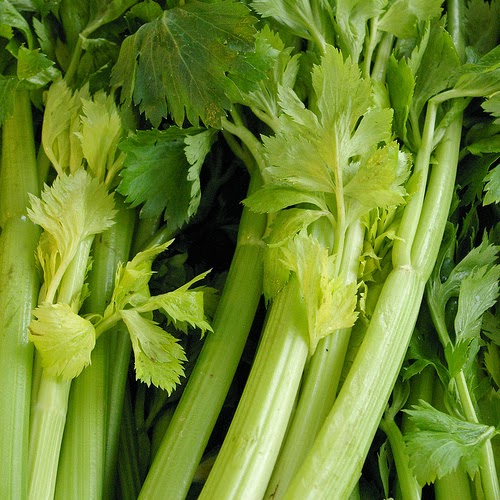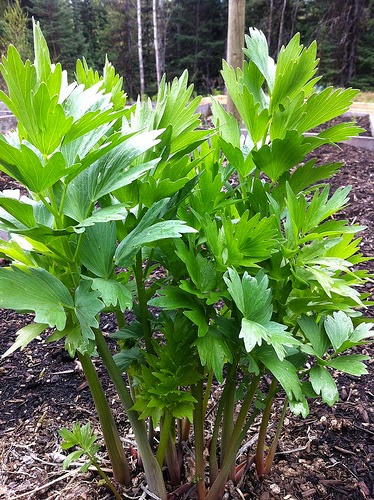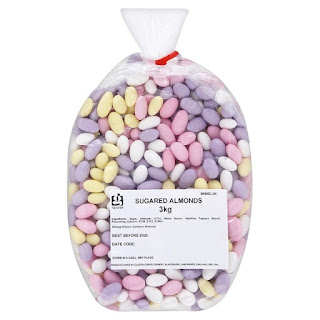from
Behind the French Menu
by
Bryan G. Newman
Celery.
Photograph courtesy of Dave Morris
Céleri – Celery; the vegetable.
Celery in France is often in recipes for the aroma and taste that it brings to many soups and stews; used lightly it enhances and does not overpower the other ingredients. Individual members of the celery family are also served raw as part of salads and vegetable juices. However, celery seeds on their own have a strong taste, and they will be used as a spice. Celery salt made from celery seeds and salt makes an excellent condiment. For all these reasons, I have included celery within the appendix on herbs and spices in the book behind this blog.
In the UK and the USA most of us still only see the traditional branch celery our local supermarket; farmers' markets are the best place to find the other members of the celery family. In France and the rest of Europe in the markets and supermarkets you will be made aware of the other members of the celery family.
Céleri or Céleri Branche – Celery, Branch celery.
Branch celery or blanching celery is the celery that most of us recognize on sight by its long green stems. Branch celery’s exact origins are much disputed, but we know that it has been grown in the Mediterranean region for at least 3,000 years.
Even Guinea fowl enjoy celery in France.
Photograph courtesy of Guinea Fowl Flock.
Branch celery will be served raw in salads, and in Europe the stalks may be cooked and used in soups or served with other vegetables. Branch celery cooked or uncooked is most often partnered with fish. The celery leaves may be used for their flavor or like parsley prepared as a garnish as well as for decoration. In North America and the UK roots of branch celery are usually cut off before they arrive at a supermarket. However, branch celery, in France, will be sold to the restaurants with their roots intact. The roots will be used to flavor soups and other dishes.
Branch celery in a North American supermarket.
Photograph courtesy of Daniel James
Branch celery on French menus:
Filet de Sole Farci aux Crevettes, Fumet au Vin Blanc, Céleri Branche et Pomme de Terre au Citron – A filet of sole stuffed with shrimps, prepared in a fish stock flavored with white wine. The dish is garnished with branch celery and potatoes flavored with lemon.
Branch celery and carrot salad.
Photograph courtesy of michelle@TNS
La Salade de Quinoa au Crabe, Herbes et Céleri Branche. - A salad of quinoa, crab, herbs and branch celery. Quinoa is a New World import from South America. I was told that it is neither a cereal nor a grass as well as containing no gluten. In fact, while I eat quinoa I am not quite sure what quinoa is. Any ideas? The crab offered in this menu listing is France’s most popular crab. You will know that by its name…." the crab". This crab's real French name is the crabe torteau, the edible brown crab in English.
La Niçoise - Salade, Poivron, Concombre, Haricots Verts, Céleri Branche, Tomate, Oeuf, Thon, Anchois, Olive, Radis. – A composed of salad, sweet peppers, cucumber, French green beans, branch celery, tomatoes, hard boiled eggs, tuna, anchovies, olives, and radishes.
Thankfully this menu listing has their chef’s ingredients for a Salad Niçoise clearly described. Every chef from Provence has his or her own recipe for Salad Nicoise. There are debates on the correct ingredients that have continued for more than 100 years.
Examples of arguments over the ingredients in a real Salad Niçoise
Henri Heyraud was a famous Provençal chef, teacher and historian of the all the cuisine served in France in the early 20th C. His recipe offered included both anchovy filets and tuna. Escoffier’s recipe included anchovies only; the tuna was out. However, neither of these famous chefs used branch celery or cucumbers. For more about the history of Salade Niçoise click here,
Branch celery in the languages of France’s neighbors:
(Catalan – api), (Dutch – selderij), (German – sellerie), (Italian – sedano), (Spanish – apio, celerí, apio tradicional).
Livèche, Ache des Montagnes - Lovage or False Celery.
Céleri Bâtard, Livèche, Ache des Montagnes and Céleri de Montagne - Lovage or False Celery. This is a plant with a strong celery aroma and taste. However, lovage has no true relationship to the celery family. Despite that, it is appreciated in the kitchen for its strong celery taste and aroma. In the kitchen its strong taste ensures that it will be used sparingly.
Lovage may also be on the menu by name when its flavor and scent is perfect for a particular dish, and young lovage leaves may also be added, albeit sparingly, to a salad.
Lovage and salmon.
Photograph courtesy of ulterior epicure.
Lovage on French menus:
Le Fera de Neuchâtel en Mignon à la Livèche et Cèpes de Pays – The broad whitefish caught in Lake Neuchatel in Switzerland. The menu description here of “mignon” indicates an attractive serving, and the menu listing shows that the fish is flavored with lovage and wild porcini. cepe, mushrooms. Lake Neuchatel, where this fish was caught, is the largest lake that is entirely with Switzerland.
Lovage growing.
Saumon Label Rouge Mi-cuit, Mi Fumé par Nos Soins Coulis de Livèche, Jeune Betterave. – Red label Atlantic salmon lightly cooked and smoked in-house. The salmon is served with a coulis, a puree, of fresh lovage and young beetroots.
Lovage in the languages of France’s neighbors:
(Catalan - api bord, api de muntanya), (Dutch - lavas). (German – liebstöckel), (Italian – levistico), (Spanish – levístico).
Céleri-rave – Celeriac
If, like me, you are not a great fan of branch celery, then despite that caveat I really do advise you to try celeriac. Celeriac has a taste, texture and aroma that is entirely different to branch celery! Celeriac has a light celery taste, and its texture is completely different. The French usually prepare celeriac as a slightly rough puree that you may mistake for hand mashed potatoes until you taste it or smell it. That was my first unintended introduction, and since then I have been hooked. Celeriac mashed on its own, mixed with mashed potatoes, added butter or milk or cheese, are all flavorsome dishes
Celeriac roots and leaves on sale in a market.
Photograph courtesy of Brian Boyer.
Celeriac is an odd looking root, but do not let its looks put you off, On the outside, without its leaves, celeriac looks somewhat like a large bumpy brown beet-root. Celeriac is grown only for its root and its mild celery taste; the leaves may be used for decoration, but they add very little taste.
Celeriac on French menus:
Saumon Grillé et sa Purée de Celeri-Rave . - Grilled salmon served with a puree of celeriac. Delicious.
Celeriac soup.
Céleri-Rave Rémoulade – Celeriac mashed, and served with sauce rémoulade. A sauce remoulade is a mayonnaise and mustard sauce eggs. This dish is very popular.
La Soupe de Céleri Rave et Roquette. - A celeriac soup lightly spiced with the addition of rocket, the herb.
Celeriac is not just tasty it is good for you.
Celeriac has only 6% starch. Compare that with a with a potato that has 15% starch! Added to the benefits of its low starch content are celeriac’s excellent flavor and texture, and so it is not surprising that that for many reasons celeriac is very popular.
Celeriac in the language of France’s neighbors:
(Catalan - api rave), (Dutch - knolselderij), (German – knollenselleri, , knollen-sellerie), (Italian - sedano rapa), ( Spanish - apio nabo, celeriac).
Céleri Sauvage, Ache des Marais – Wild celery or Smallage.
Céleri Sauvage, Céleri à Couper, Persil des Marais or Ache des Marais – Wild celery, Marsh Parsley or Smallage. This European celery family member originally grew only in the wild. It is the great-grandfather or great-grandmother of both branch celery and celeriac. As may be expected, wild celery is now also domesticated by market gardeners; the taste and aroma of domesticated wild celery is now going into recipes for soups and salads all over Europe.
The original wild celery plant is very leafy. The raw leaves of the plant may be used in salads, and the stalks when used, must be well cooked, and cut, as they can be stringy. The real wild plant has a stronger taste and smell than the cultivated “wild” variety. For that reason, wild celery provides an important side income, in the season, for gatherers of wild mushrooms and herbs who make a living selling to restaurants. Both the wild and the cultivated wild celery are biennials; that means there is only one crop every two years, and that makes wild celery more expensive. There are two plants called wild celery in North America. The American wild celery grows underwater and will unlikely to be seen in your local supermarket. However, the wild celery that originated in Europe is, of course grown in and on the menu in North America.
Wild celery on French Menus:
Pâté d'Oie, Émulsion aux Racines de Céleri Sauvage, Pain de Campagne. Duck liver pate prepared with a thick sauce made from the roots of wild celery and served with country bread. For more on pain de campagne, country bread, and other French breads click here.
Escabèche de Queues d'Écrevisses, Vinaigrette de Céleri Sauvage.– Marinated crayfish tails served with wild celery flavored with a vinaigrette sauce. Escabèche is a dish of Peruvian origin and is always served cold. Escabèche is well established in France and will be on many seafood restaurant menus. France has always had its own excellent dishes with marinated fish, and the Peruvian additions of seafood, smoked fish and shellfish with a different flavor have expanded the offerings. Unless otherwise indicated the marinade will be wine vinegar with herbs.
The seeds, the fruits from wild celery, are considered tastier than the seeds from branch celery or celeriac and so wild celery seeds are preferred for making celery salt. French chefs are well aware of the different tastes of wild and cultivated wild celery and what they can add to soup or a sauce; the demand for the wild plant is growing. French market gardeners are the source of the cultivated wild plant.
Wild celery in the languages of France's neighbors:
(Catalan – abit or api boscà), (Dutch - selderij ),( German – echte sellerie, vild sellerie), (Italian - sedano, sedano commune), ( Spanish - apio, apio borde, apio de agua).
Connected Posts:
Behind the French Menu
by
Bryan G. Newman
Copyright 2010, 2012, 2015.
















